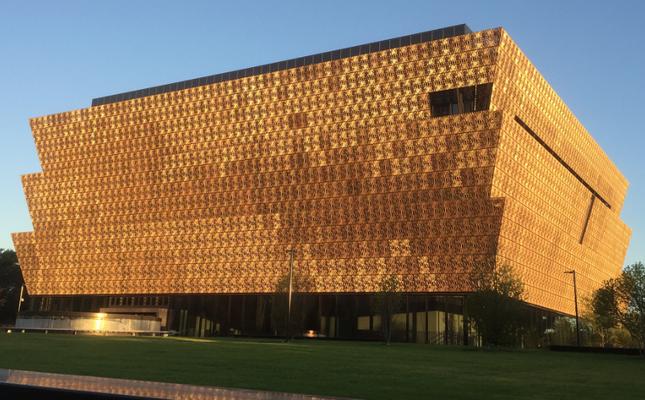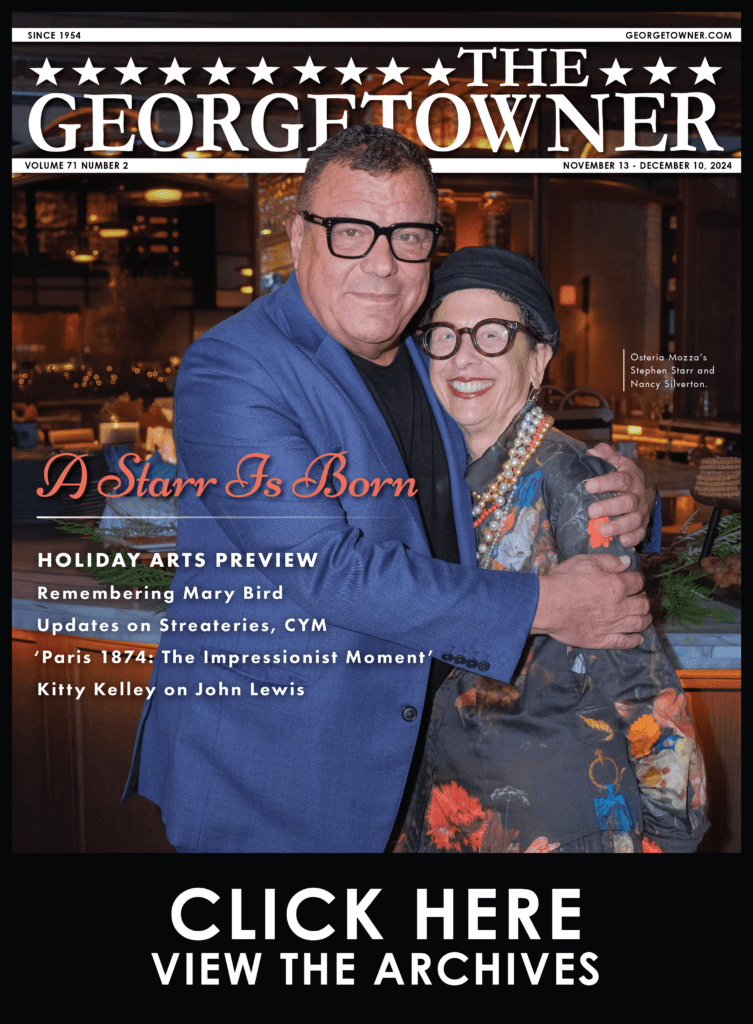Musings on the African American History Museum
By • September 14, 2016 0 998

You can feel a surge, a buzz building in this city about a building.
It is about one thing, and one thing only.
On Sept. 24, the National Museum of African American History and Culture will have its grand opening to the public, will celebrate itself amid a tidal wave of anticipation and interest that — like the presence of the first African American President of the United States, who will be there to anoint and inaugurate — was dreamed of, hoped for the longest number of years.
Here it is. When older African Americans in this city talked about the election of Barack Obama in 2008, there was always a kind of surreal aspect to the conversation.
The phrase “not in my lifetime” was used often by a retired mailman, a man dying of cancer who went to vote and a hundred year old neighborhood man who said he was going to vote and “lay himself on the line.” The phrase was also used Dorothy Height, the treasured African American civil rights leader, who lived to see a black president, but died a year later. She did not live to see the museum rise over long years and much time on the National Mall, but one assumes her presence is noted nonetheless.
I have not yet been inside but have watched it rise like a Maya Angelou poem, strong, blessed by light and dark, like nothing else on the Mall, which is where our history, our art, our achievements have been hollowed out and made hallowed. Noted architects have made an apparent thing of beauty, a place where you find succor and information, hope and history. Thousands are expected and millions will come in time.
Hundreds, maybe thousands, worked together and apart to make this happen, and in retrospect, it is surely way overdue and, in a world that changes fast and faster, not quite too late. It means to be a full realization of the missing piece in American history, the African American experience of and in America, as well as the African American experience of museum-making and museum-going.
And it wants to be more — the experience of history made universal. Lonnie G. Bunch, Founding Director of the National Museum of African American History and Culture, stated the hope and intent succinctly: “This building will sing for all of us.”
To this comment, one might add: Pick your favorite song and sing along.
We seem to be living in a time when the discussion of race and its meaning in America seems to be gurgling to the surface again, amid an atmosphere of rising violence and division, of demonstration and protest and cries for justice, at a time of apparently increased police shootings of black men —and violence of black on black, as well. There seems to be a desire amid all this to find a way to talk honestly, and express honest emotions about the state of race in the year 2016. We have begun to question verities while still embracing them. For this discussion to get a further push, the NMAAHC seems to have arrived at perhaps just the right time.
You can feel the anticipation, the rising interest in the news coverage, on television, out in the streets. (I will be attending the press preview today.) The museum opens in a city with a history that’s also changing.
Washington used to be known as “Chocolate City,” but that’s shifting. As the city shifts and, for lack of a better word, gentrifying and moving into once almost all black neighborhoods. Before the museum, there was Black History Month and the celebration of Martin Luther King’s birthday, events and occasions hard-fought into reality. We already have the African American Civil War Memorial and Museum on U Street. Next week, the Shaw neighborhood will be part of the weekend celebration of the new museum on the Mall.
Around Washington, D.C., there is much history — black communities in Georgetown, and 272 slaves, as we have been told recently told, sold in 1838, by the Jesuits of Georgetown Universities. The city is full of cemeteries, churches and landmarks that tell the tale of black communities in old Washington neighborhoods, in slavery days, in Jim Crow days, in civil rights days. Black or white, those are the stories we know about first hand or from songs and tale-tellers and local politics, from the memories of the March on Washington or the Million Man March.
I don’t know exactly what’s in the museum, but what’s been put out there, it ought to touch all of us somehow. Some of us weren’t born yesterday, and we have our own memories and memories of reacting to events that astounded us, moved us and shocked us. I grew up in a small town in northern Ohio, an all-white way station, and saw few black people in the flesh, except on opposing high school athletic fields or working with a guy named Sylvester at the Howard Johnson’s on the turnpike. However, I do remember hearing about Emmett Till, as if his murder was a scary tale from another country.
I don’t know how much of our city’s history as Chocolate City will make it into the museum. I do remember Marion Barry talking about his childhood in Mississippi when he wanted to drink out of the “whites only” water fountain in his home town.
There are supposed to be some 35,000 or so artifacts and objects in the museum relating to African American life in America. I know there will be things we all recognize, songs we know and danced to, stories that will bring everyone to tears or anger, or perhaps shock.
Everyone will see different things, because it seems from the outside that the building has been built with just the right size and angles and clarity and air to house a thousand different voices and opinions. It could be every and all things to the eponymous “all of us”— a school, a university, a church, a way station, a meditation center, a garden filled with all that humans are capable of, a hillside for parables and modern miracles, a concert hall.
The museum seems from a distance a place and space with room for any possibility you bring to it, and still have room for more. Soon, it will be very close.

